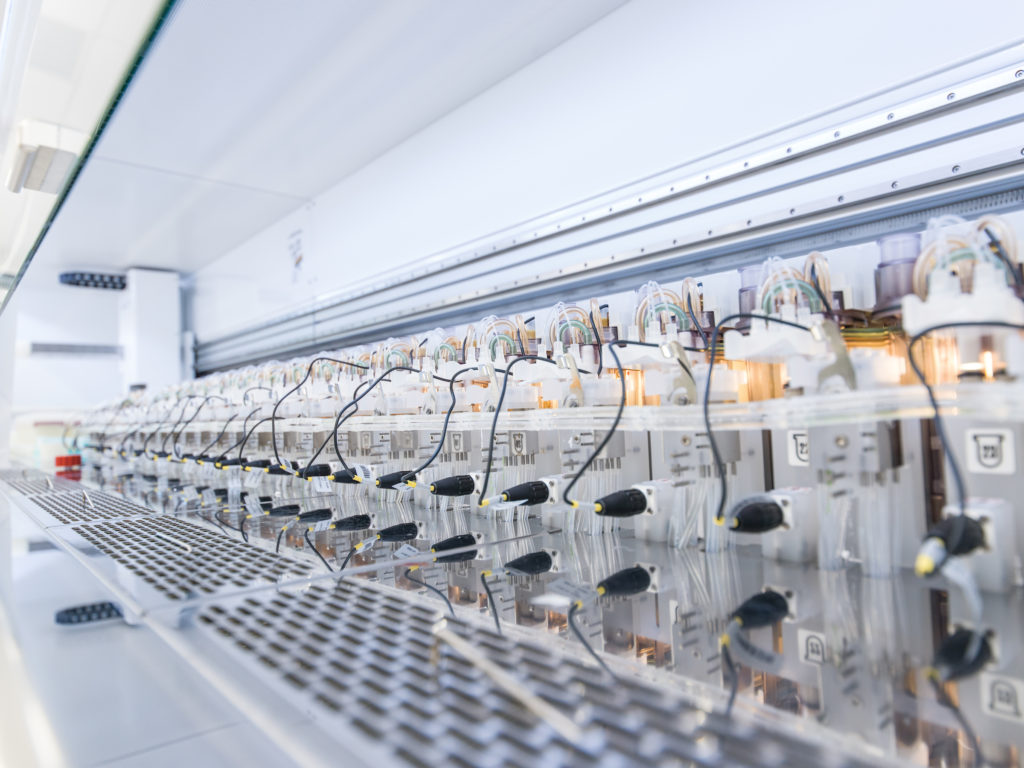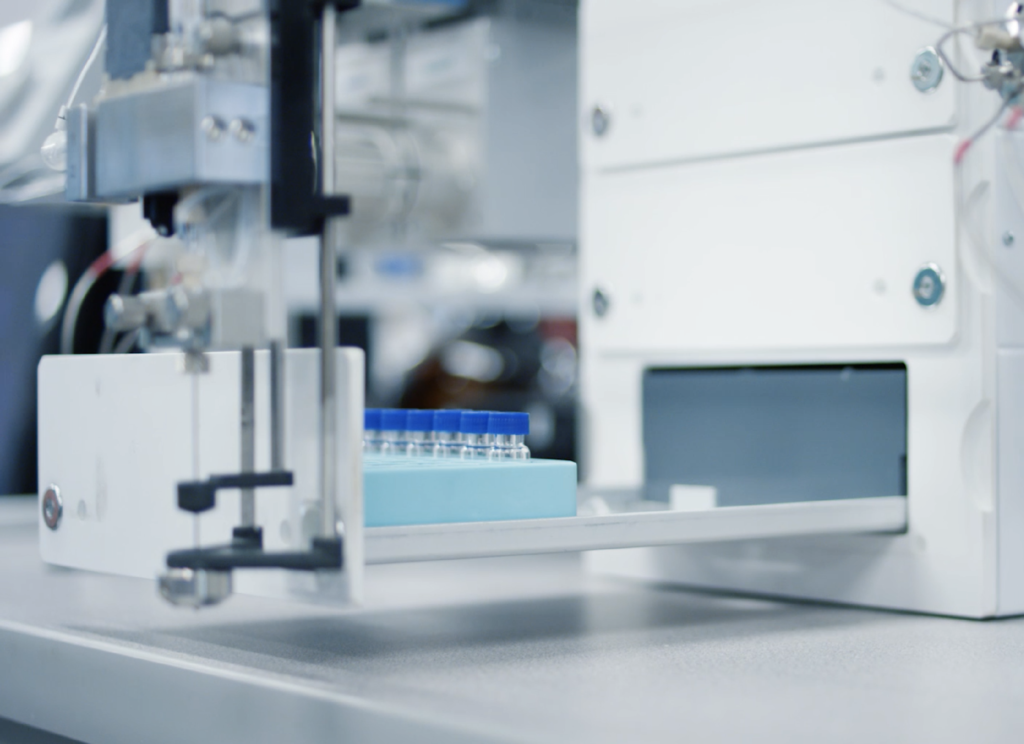Overview
Strain engineering often requires improving production hosts.
In one such instance at Ginkgo, our team sought to modify our partner’s heavily-engineered E. coli strain. This strain already expressed 7 enzymes to produce their target molecule. One goal of this collaboration was to improve pathway productivity using genome-wide screening and engineering. This project leveraged several of Ginkgo’s capabilities, including DNA synthesis, strain construction, and ultra high-throughput screening.

The Ginkgo Approach
Our campaign began by integrating multi-omics datasets. Our systems biology team used untargeted metabolomics to construct a metabolic model. We then used RNA-seq transcriptomics to identify differentially-expressed genes in the 0.25L Ambr 250 fermentation system. The data from this work, along with literature searches and Ginkgo’s in-house expertise, defined a set of more than 300 genes predicted to impact the production of the target small molecule.

Genome Engineering on the Ginkgo Platform
We designed more than 3,000 genome edits that modulate expression of native E. coli genes, and applied these to a previously-engineered production strain. These constructs were designed and synthesized, and strains were built using the Inscripta Onyx platform—a system we have previously used to demonstrate an order of magnitude increase in the throughput of certain genome editing capabilities for S. cerevisiae and E. coli. Individual colonies were isolated using an automated colony picker designed by kbiosystems, cultured using automated systems developed at Ginkgo, and screened using ultra high-throughput acoustic ejection mass spectrometry from SCIEX.
This workflow of designing, building, and testing hypotheses from primary data resulted in a total of 144,000 mass spectrometry data points and identified more than 100 candidate strains with significantly improved titers in small-scale cultures. The strains from this work are candidates for further screening in Ginkgo’s Ambr 250 fermentation system. This engineering campaign from design of DNA to generation of screening data was completed in approximately three months.
Takeaway
This case study is an example of how Ginkgo integrates automation, next-generation sequencing, digitized DNA design and strain construction, and ultra high-throughput chemical analytics into a single workflow.
Our flexible platform allows the development of many types of workflows that stitch together the latest technologies and bring quick, effective metabolic engineering solutions for our customers.
In Summary
- 3,000+
- Genome edits designed that modulate expression of native E. coli genes
- 144k
Mass spectrometry data points- 100+
- Candidate strains identified with significantly improved titers in small-scale cultures
- 3
- Months from design of DNA to generation of screening data
